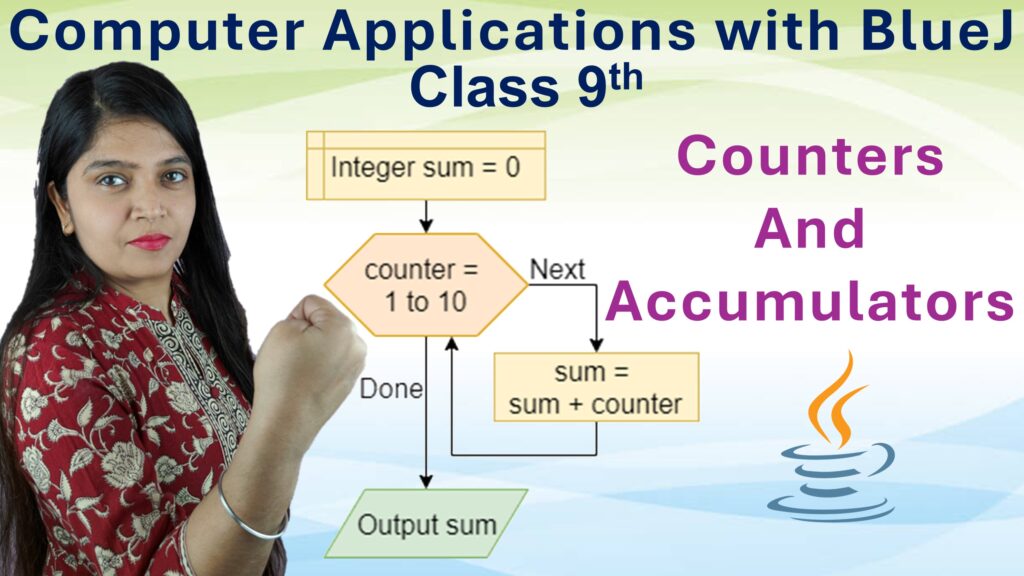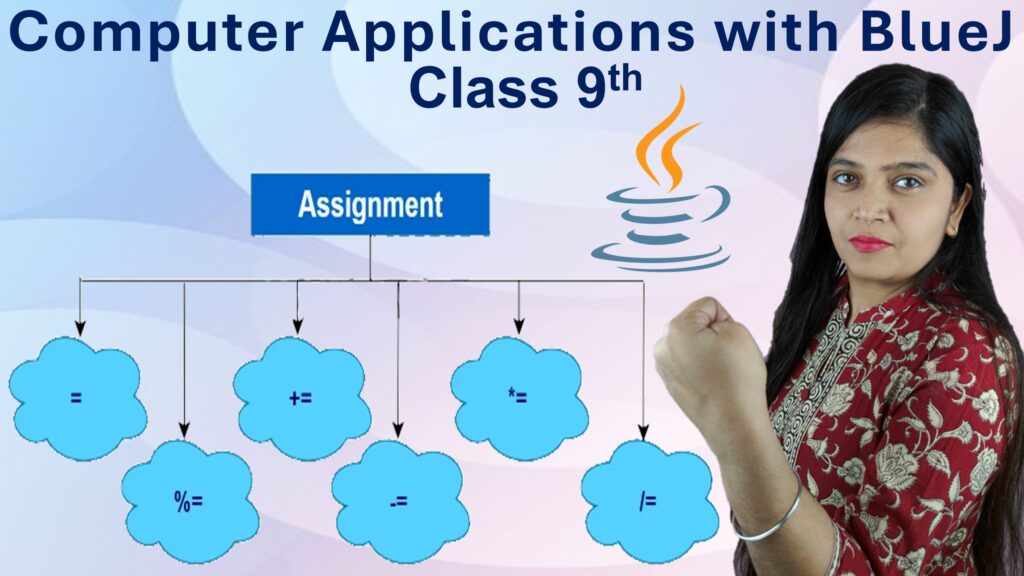Exercise: 8-B
Q1: Multiple Choice Type:
i. Identical pens are bought at 10 for ₹80. If these pens are sold at 25% profit; the S.P. per pen is:
Step 1: Cost Price per pen = \(\frac{80}{10} = ₹8\)
Step 2: Profit = 25% of ₹8 = \(\frac{25}{100} \times 8 = ₹2\)
Step 3: Selling Price per pen = ₹8 + ₹2 = ₹10
Answer: b. ₹10
ii. If C.P. of 20 identical articles is same as S.P. of 25 articles. The profit or the loss as percent is:
Step 1: Let C.P. of 1 article = ₹1 → C.P. of 20 articles = ₹20
Step 2: Given: S.P. of 25 articles = ₹20 ⇒ S.P. per article = \(\frac{20}{25} = ₹0.80\)
Step 3: Loss = ₹1 – ₹0.80 = ₹0.20
Step 4: Loss % = \(\frac{0.20}{1} \times 100 = 20\%\)
Answer: c. 20% loss
iii. The marked price of an article is ₹500 and is sold for ₹400; the discount given is:
Step 1: Discount = ₹500 – ₹400 = ₹100
Step 2: Discount % = \(\frac{100}{500} \times 100 = 20\%\)
Answer: b. 20%
iv. An article is marked at ₹800 and is sold at 20% discount. Its S.P. is:
Step 1: Discount = \(\frac{20}{100} \times 800 = ₹160\)
Step 2: S.P. = ₹800 – ₹160 = ₹640
Answer: c. ₹640
v. By selling 10 articles, a man gains equal to cost price of 2 articles, the profit made is:
Step 1: Let cost price of 1 article = ₹1 → C.P. of 10 articles = ₹10
Step 2: Gain = C.P. of 2 articles = ₹2
Step 3: Profit % = \(\frac{2}{10} \times 100 = 20\%\)
Answer: b. 20%
Q2: A fruit-seller sells 4 oranges for ₹3, gaining 50%. Find:
i. C.P. of 4 oranges
Step 1: S.P. of 4 oranges = ₹3
Step 2: Profit = 50% ⇒ S.P. = \(\frac{150}{100} \times \text{C.P.}\)
Step 3: Let C.P. of 4 oranges = ₹x
Then, \(\frac{150}{100} \times x = 3\)
Step 4: \(\frac{3}{2}x = 3\) ⇒ Multiply both sides by 2:
\(3x = 6\)
Step 5: \(x = \frac{6}{3} = ₹2\)
Answer: ₹2
ii. C.P. of one orange
C.P. of 4 oranges = ₹2 ⇒ C.P. of 1 orange = \(\frac{2}{4} = ₹0.50\)
Answer: ₹0.50
iii. S.P. of one orange
S.P. of 4 oranges = ₹3 ⇒ S.P. of 1 orange = \(\frac{3}{4} = ₹0.75\)
Answer: ₹0.75
iv. Profit made by selling one orange
Profit = S.P. − C.P. = ₹0.75 − ₹0.50 = ₹0.25
Answer: ₹0.25
v. Number of oranges needed to be bought and sold to gain ₹24
Profit per orange = ₹0.25
Number of oranges = \(\frac{24}{0.25} = 96\)
Answer: 96 oranges
Q3: A man sells 12 articles for ₹80 gaining \(33\frac{1}{3}\%\). Find the number of articles bought by the man for ₹90.
Step 1: Given gain = \(33\frac{1}{3}\% = \frac{1}{3}\)
Step 2: Let the C.P. of 1 article = ₹x ⇒ Profit = \(\frac{1}{3}x\)
Step 3: So, S.P. of 1 article = \(x + \frac{1}{3}x = \frac{4x}{3}\)
Step 4: S.P. of 12 articles = ₹80 ⇒
\(12 \times \frac{4x}{3} = 80\)
Step 5: \(\frac{48x}{3} = 80 ⇒ 16x = 80 ⇒ x = ₹5\)
Step 6: So, C.P. of 1 article = ₹5
Step 7: Now, with ₹90, number of articles he can buy = \(\frac{90}{5} = 18\)
Answer: 18 articles
Q4: The selling price of 15 articles is equal to the cost price of 12 articles. Find the gain or loss as percent.
Step 1: Let the cost price of 1 article be ₹1
Step 2: Then, C.P. of 12 articles = ₹12
Step 3: S.P. of 15 articles = ₹12 ⇒ S.P. of 1 article = \(\frac{12}{15} = ₹0.80\)
Step 4: C.P. of 1 article = ₹1 and S.P. = ₹0.80
Step 5: Loss = ₹1 − ₹0.80 = ₹0.20
Step 6: Loss % = \(\frac{0.20}{1} \times 100 = 20\%\)
Answer: Loss = 20%
Q5: A shopkeeper bought rice worth ₹4,500. He sold one-third of it at 10% profit. If he desires a profit of 12% on the whole, find:
i. the selling price of the rest of the rice.
Step 1: Total Cost Price = ₹4500
Step 2: One-third of the rice = \(\frac{1}{3} \times 4500 = ₹1500\)
Step 3: Remaining two-thirds = ₹4500 − ₹1500 = ₹3000
Step 4: Profit on ₹1500 at 10% = \(\frac{10}{100} \times 1500 = ₹150\)
Step 5: Selling Price of 1st part = ₹1500 + ₹150 = ₹1650
Step 6: Desired total profit = \(\frac{12}{100} \times 4500 = ₹540\)
Step 7: Total desired S.P. = ₹4500 + ₹540 = ₹5040
Step 8: Let S.P. of rest = x ⇒ ₹1650 + x = ₹5040
⇒ x = ₹5040 − ₹1650 = ₹3390
Answer: Selling price of the rest of the rice = ₹3390
ii. the percentage profit on the rest of the rice.
Step 9: C.P. of remaining rice = ₹3000
Step 10: Profit = ₹3390 − ₹3000 = ₹390
Step 11: Profit % = \(\frac{390}{3000} \times 100 = 13\%\)
Answer: Profit percentage on remaining rice = 13%
Q6: Mohan bought a certain number of notebooks for ₹600. He sold \(\frac{1}{4}\) of them at 5 percent loss. At what price should he sell the remaining notebooks so as to gain 10% on the whole?
Step 1: Total Cost Price = ₹600
Step 2: \(\frac{1}{4}\) of the notebooks were sold at 5% loss
Step 3: C.P. of \(\frac{1}{4}\) notebooks = \(\frac{1}{4} \times 600 = ₹150\)
Step 4: Loss = 5% on ₹150 ⇒ Loss = \(\frac{5}{100} \times 150 = ₹7.50\)
Step 5: S.P. of those notebooks = ₹150 − ₹7.50 = ₹142.50
Step 6: C.P. of remaining \(\frac{3}{4}\) notebooks = ₹600 − ₹150 = ₹450
Step 7: Required total profit = 10% of ₹600 = ₹60
Step 8: Total required S.P. = ₹600 + ₹60 = ₹660
Step 9: Let the S.P. of the remaining notebooks be x
Then, ₹142.50 + x = ₹660
Step 10: x = ₹660 − ₹142.50 = ₹517.50
Answer: Mohan should sell the remaining notebooks for ₹517.50
Q7: Raju sells a watch at 5% profit. Had he sold it for ₹24 more, he would have gained 11%. Find the cost price of the watch.
Step 1: Let the Cost Price (C.P.) of the watch = ₹x
Step 2: Profit in 1st case = 5% of x = \(\frac{5}{100} \times x = \frac{5x}{100}\)
Step 3: So, S.P. in 1st case = \(x + \frac{5x}{100} = \frac{105x}{100}\)
Step 4: Profit in 2nd case = 11% of x = \(\frac{11x}{100}\)
Step 5: So, S.P. in 2nd case = \(x + \frac{11x}{100} = \frac{111x}{100}\)
Step 6: Difference in selling prices = ₹24
⇒ \(\frac{111x}{100} – \frac{105x}{100} = ₹24\)
Step 7: \(\frac{6x}{100} = 24\) ⇒ Multiply both sides by 100:
\(6x = 2400\)
Step 8: \(x = \frac{2400}{6} = ₹400\)
Answer: Cost Price of the watch = ₹400
Q8: A wrist watch is available at a discount of 9%. If the list price of the watch is ₹1,400, find the discount given and the selling price of the watch.
i. Discount given
Step 1: List Price = ₹1400
Step 2: Discount = 9% of ₹1400
= \(\frac{9}{100} \times 1400 = ₹126\)
Answer: Discount given = ₹126
ii. Selling Price of the watch
Step 3: Selling Price = List Price − Discount
= ₹1400 − ₹126 = ₹1274
Answer: Selling Price = ₹1274
Q9: A shopkeeper sells an article for ₹248.50 after allowing a discount of 10% on its list price. Find the list price of the article.
Step 1: Let the List Price = ₹x
Step 2: Discount allowed = 10% ⇒ Selling Price = \(90\%\) of List Price
Step 3: So, \( \frac{90}{100} \times x = ₹248.50 \)
Step 4: \( \frac{9x}{10} = 248.50 \)
Step 5: Multiply both sides by 10:
\(9x = 2485 ⇒ x = \frac{2485}{9} = ₹276.11\overline{1} \)
Answer: List Price of the article = ₹276.11 (approx)
Q10: A shopkeeper buys an article for ₹450. He marks it at 20% above the cost price. Find:
i. The marked price of the article
Step 1: C.P. = ₹450
Step 2: Marked Price = C.P. + 20% of C.P.
= ₹450 + \(\frac{20}{100} \times 450 = ₹90\)
= ₹450 + ₹90 = ₹540
Answer: Marked Price = ₹540
ii. The selling price, if he sells the article at 10 percent discount
Step 3: Discount = 10% of ₹540 = \(\frac{10}{100} \times 540 = ₹54\)
Step 4: Selling Price = ₹540 − ₹54 = ₹486
Answer: Selling Price after 10% discount = ₹486
iii. The percentage discount given by him, if he sells the article for ₹496.80
Step 5: Marked Price = ₹540 (from part i)
Step 6: Discount = ₹540 − ₹496.80 = ₹43.20
Step 7: Discount % = \(\frac{43.20}{540} \times 100 = 8\%\)
Answer: Discount given = 8%
Q11: The list price of an article is ₹800 and is available at a discount of 15 percent. Find:
i. the selling price of the article
Step 1: List Price = ₹800
Step 2: Discount = 15% of ₹800 = \(\frac{15}{100} \times 800 = ₹120\)
Step 3: Selling Price = ₹800 − ₹120 = ₹680
Answer: Selling Price = ₹680
ii. the cost price of the article if a profit of \(13\frac{1}{3}\%\) is made on selling it
Step 4: Let the Cost Price be ₹x
Step 5: Profit = \(13\frac{1}{3}\% = \frac{40}{3}\%\)
Step 6: Selling Price = Cost Price + Profit
⇒ \(680 = x + \frac{40}{300} \times x = x \left(1 + \frac{40}{300}\right) = x \times \frac{340}{300}\)
Step 7: \(680 = \frac{340x}{300}\)
Step 8: Cross-multiply: \(680 \times 300 = 340x\)
⇒ \(204000 = 340x\)
Step 9: \(x = \frac{204000}{340} = ₹600\)
Answer: Cost Price = ₹600
Q12: An article is marked at ₹2,250. By selling it at a discount of 12%, the dealer makes a profit of 10%. Find:
i. the selling price of the article
Step 1: Marked Price = ₹2250
Step 2: Discount = 12% of ₹2250 = \(\frac{12}{100} \times 2250 = ₹270\)
Step 3: Selling Price = ₹2250 − ₹270 = ₹1980
Answer: Selling Price = ₹1980
ii. the cost price of the article for the dealer
Step 4: Profit = 10% ⇒ S.P. = 110% of C.P.
Step 5: Let the C.P. be ₹x
Then, \(\frac{110}{100} \times x = 1980\)
Step 6: \(\frac{11x}{10} = 1980\)
Step 7: Multiply both sides by 10:
\(11x = 19800\)
Step 8: \(x = \frac{19800}{11} = ₹1800\)
Answer: Cost Price = ₹1800
Q13: By selling an article at 20% discount, a shopkeeper gains 25%. If the selling price of the article is ₹1,440, find:
i. the marked price of the article
Step 1: Let Marked Price = ₹x
Step 2: Discount = 20% of x ⇒ Selling Price = \(80\%\) of x = \(\frac{80x}{100}\)
Step 3: So, \(\frac{80x}{100} = 1440\)
Step 4: Multiply both sides by 100:
\(80x = 144000\)
Step 5: \(x = \frac{144000}{80} = ₹1800\)
Answer: Marked Price = ₹1800
ii. the cost price of the article
Step 6: Profit = 25% ⇒ S.P. = 125% of C.P.
Step 7: Let C.P. = ₹y, then:
\(\frac{125}{100} \times y = 1440\)
Step 8: \(\frac{5y}{4} = 1440\)
Step 9: Multiply both sides by 4:
\(5y = 5760 ⇒ y = \frac{5760}{5} = ₹1152\)
Answer: Cost Price = ₹1152
Q14: A shopkeeper marks his goods at 30 percent above the cost price and then gives a discount of 10 percent. Find his gain percent.
Step 1: Let the Cost Price (C.P.) = ₹100 (Assumed for simplicity)
Step 2: Marked Price = C.P. + 30% of C.P.
= ₹100 + \(\frac{30}{100} \times 100 = ₹30\)
= ₹130
Step 3: Discount = 10% of ₹130 = \(\frac{10}{100} \times 130 = ₹13\)
Step 4: Selling Price (S.P.) = ₹130 − ₹13 = ₹117
Step 5: Gain = S.P. − C.P. = ₹117 − ₹100 = ₹17
Step 6: Gain % = \(\frac{17}{100} \times 100 = 17\%\)
Answer: Gain = 17%
Q15: A ready-made garments shop in Delhi allows 20 percent discount on its garments and still makes a profit of 20 percent. Find the marked price of a dress which is bought by the shopkeeper for ₹400.
Step 1: Let the Marked Price = ₹x
Step 2: Discount = 20% of ₹x = \(\frac{20}{100} \times x = \frac{x}{5}\)
Step 3: Selling Price = Marked Price − Discount
= \(x – \frac{x}{5} = \frac{4x}{5}\)
Step 4: Shopkeeper makes 20% profit on Cost Price
⇒ Selling Price = Cost Price + 20% of Cost Price = \(₹400 + \frac{20}{100} \times 400 = ₹480\)
Step 5: So, \(\frac{4x}{5} = 480\)
Step 6: Multiply both sides by 5:
\(4x = 2400\)
Step 7: \(x = \frac{2400}{4} = ₹600\)
Answer: Marked Price of the dress = ₹600
Q16: At 12% discount, the selling price of a pen is ₹13.20. Find its marked price. Also find the new selling price of the pen, if it is sold at 5% discount.
i. Find the marked price
Step 1: Let the Marked Price = ₹x
Step 2: Discount = 12% of ₹x = \(\frac{12}{100} \times x = \frac{12x}{100}\)
Step 3: Selling Price = Marked Price − Discount = \(x – \frac{12x}{100} = \frac{88x}{100}\)
Step 4: Given that Selling Price = ₹13.20
So, \(\frac{88x}{100} = 13.20\)
Step 5: Multiply both sides by 100:
\(88x = 1320 ⇒ x = \frac{1320}{88} = ₹15\)
Answer: Marked Price = ₹15
ii. Find new selling price if discount is 5%
Step 6: New Discount = 5% of ₹15 = \(\frac{5}{100} \times 15 = ₹0.75\)
Step 7: New Selling Price = ₹15 − ₹0.75 = ₹14.25
Answer: New Selling Price = ₹14.25
Q17: The cost price of an article is ₹2,400 and it is marked at 25% above the cost price. Find the profit and the profit percent, if the article is sold at 15% discount.
Step 1: Cost Price (C.P.) = ₹2,400
Step 2: Marked Price = C.P. + 25% of C.P.
= ₹2,400 + \(\frac{25}{100} \times 2400 = ₹600\)
= ₹3,000
Step 3: Discount = 15% of ₹3,000 = \(\frac{15}{100} \times 3000 = ₹450\)
Step 4: Selling Price = ₹3,000 − ₹450 = ₹2,550
Step 5: Profit = S.P. − C.P. = ₹2,550 − ₹2,400 = ₹150
Step 6: Profit % = \(\frac{150}{2400} \times 100 = 6.25\%\)
Answer: Profit = ₹150, Profit Percent = 6.25%
Q18: Thirty articles are bought at ₹450 each. If one-third of these articles are sold at 6% loss; at what price must each of the remaining articles be sold in order to make a profit of 10% on the whole?
Step 1: Total number of articles = 30
Step 2: Cost Price per article = ₹450
Total Cost Price = 30 × ₹450 = ₹13,500
Step 3: Number of articles sold at 6% loss = \(\frac{1}{3} \times 30 = 10\)
Step 4: C.P. of these 10 articles = 10 × ₹450 = ₹4,500
Loss = 6% of ₹4,500 = \(\frac{6}{100} \times 4500 = ₹270\)
S.P. of these 10 articles = ₹4,500 − ₹270 = ₹4,230
Step 5: Remaining articles = 30 − 10 = 20
C.P. of these = 20 × ₹450 = ₹9,000
Step 6: Profit on whole = 10% of ₹13,500 = ₹1,350
So, total S.P. needed = ₹13,500 + ₹1,350 = ₹14,850
Step 7: S.P. from 10 articles already = ₹4,230
So, remaining S.P. required = ₹14,850 − ₹4,230 = ₹10,620
Step 8: S.P. per remaining article = \(\frac{10,620}{20} = ₹531\)
Answer: Each of the remaining 20 articles must be sold at ₹531
Q19: Find the single discount (as percent) equivalent to successive discounts of:
i. 80% and 80%
Step 1: Formula for single equivalent discount:
\(d = a + b – \frac{ab}{100}\)
Here, a = 80%, b = 80%
Step 2: \(d = 80 + 80 – \frac{80 \times 80}{100} = 160 – 64 = 96\%\)
Answer: Equivalent single discount = 96%
ii. 60% and 60%
Step 3: a = 60%, b = 60%
Step 4: \(d = 60 + 60 – \frac{60 \times 60}{100} = 120 – 36 = 84\%\)
Answer: Equivalent single discount = 84%
iii. 60% and 80%
Step 5: a = 60%, b = 80%
Step 6: \(d = 60 + 80 – \frac{60 \times 80}{100} = 140 – 48 = 92\%\)
Answer: Equivalent single discount = 92%







Leave a Comment